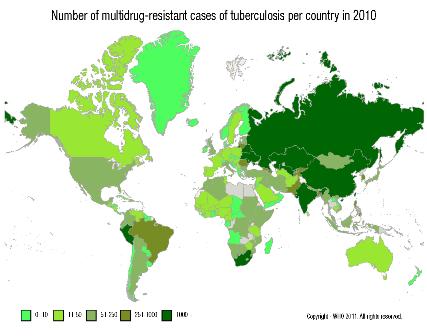Old antibiotic is new hope in fight against tuberculosis
18 September 2012
Researchers at Ecole Polytechnique Federale de Lausanne (EPFL) have discovered that the natural antibiotic pyridomycin, first reported in the 1950s, can kill Mycobacterium tuberculosis by inhibiting a vital enzyme.
In a study published in EMBO Molecular Medicine Professor Stewart Cole of the EPFL, explains how Pyridomycin inhibits a vital enzyme in a sufficiently different way from other antibiotics so it can combat even the most antibiotic-resistant strains that have recently afflicted Russia, South Africa and North America. Professor Cole is also Coordinator of the More Medicines for Tuberculosis (MM4TB) consortium and chair of the Global Health Institute at the EPFL. MM4TB is an EU-funded international project developing new drugs for TB treatment.
“We’ve rediscovered an old antibiotic that was never developed but may lead the way to treating both drug-sensitive and drug-resistant strains of TB. And above all, the strategy of revisiting antibiotics to find new leads looks like a successful one,” said Cole.
The rise and fall of TB treatment
Tuberculosis is not a disease of the past. Infections take 1.4 million lives every year, with the majority of those cases occurring in Asia and Africa. Drug-resistant strains of TB from places like India and the former Soviet Union are a global threat to public health, often brought to new countries by immigrant populations. More alarmingly, several strains have been discovered that are totally impervious to all currently available treatments. Once a resistant strain infects a human, there is little hope for survival.

Number of multi-drug resistant cases of TB per country in 2010
Today’s antibiotic dilemma can be traced back to the 1950s, when a new synthetic compound called “isoniazid” proved to be extremely effective against the malady. Nevertheless, with the recent onset of isoniazid-resistant strains, proper treatment involves four drugs and can last up to two years. Isoniazid has lost its status as the TB wonder drug.
New drug target, new hope
“We have discovered what’s known in the pharmaceutical world as a
new drug target, opening the door for the development of new drugs
and therapies that attack the same mechanism,” explained Cole.
Looking for a drug that will kill isoniazid-resistant strains led
Prof. Cole on an investigative journey into the past. With a
combination of scientific foresight and serendipity, Cole found pyridomycin, an antibiotic extracted from a soil microbe. It was
discovered around the same time as isoniazid but was left by the
wayside for 60 years.
Cole and his team found that the once-discarded antibiotic, like isoniazid, attacks one of the bacteria’s strongholds — the production of a fatty component in cell walls called mycolic acid. Mycolic acid protects the bacteria from traditional medical onslaughts by helping it weather short treatments or even hiding the microbial invader from the immune system. But Pyridomycin attacks the enzyme from a different entry point, meaning it kills isoniazid-resistant bacteria.
In the video below, Prof. Cole describes a new drug candidate and how it kills Tuberculosis bacteria.
Going back to Nature for a cure
Perhaps even more important than the potential for pyridomycin to combat drug-resistant strains of TB, is the strategy that this approach evokes. Back in the 1970s, researchers and clinicians were very excited about synthetic drugs that were easy to make. Now, drug-resistant strains could force scientists to go back to naturally occurring compounds, no matter how difficult they are to make.
Going back to look for unused natural antibiotics dips into a largely untapped pool of bioactive compounds, providing the potential to revive a floundering pharmaceutical sector by uncovering new medicines to treat drug-resistant strains of M. tuberculosis and other bacteria.
For the next phase of his research Cole is currently collaborating with Professor Karl-Heinz Altmann at the ETH Zürich to synthesize pyridomycin and increase its availability to researchers with the eventual goal of beginning clinical trials. “To purify and synthesize pyridomycin from bacteria is the chemist’s equivalent of climbing Mount Everest,” says Cole, who is nevertheless confident that Altmann’s team has cracked the chemical synthesis problem.
Further information
RC Hartkoorn, et al. Towards a new tuberculosis drug: Pyridomycin – Nature’s isoniazid. EMBO Molecular Medicine. http://onlinelibrary.wiley.com/doi/10.1002/emmm.201201689/abstract
World Health Organization interactive TB map >>